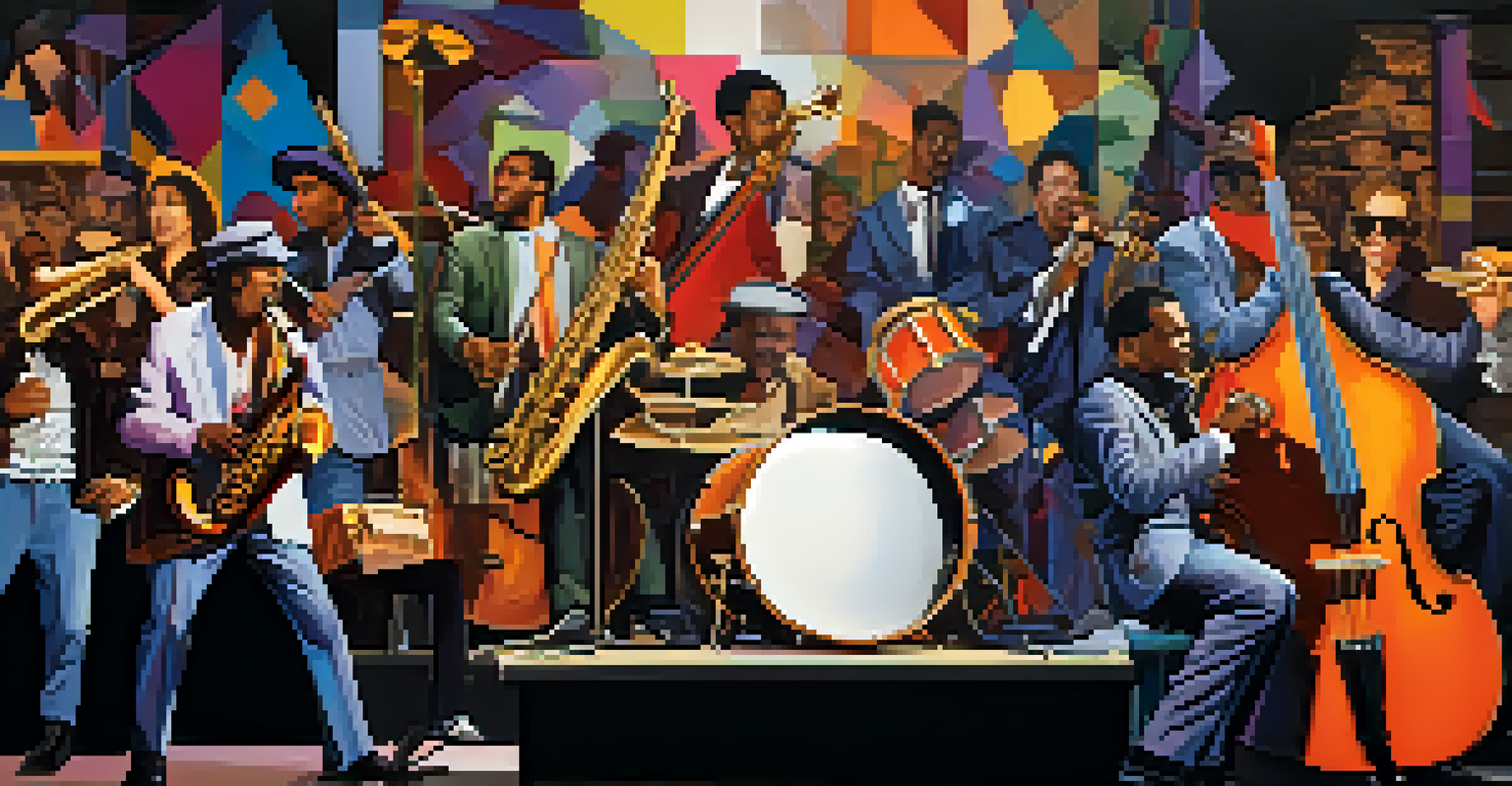How to Listen Actively and Appreciate Music Fully

Understanding Active Listening in Music
Active listening is more than just hearing notes; it’s about engaging with the music on a deeper level. Instead of letting melodies wash over you, it requires your full attention and an open mind. By focusing on the different elements within a piece—like rhythm, melody, and harmony—you can unlock a richer appreciation for the music.
Music can change the world because it can change people.
Think of it like savoring a fine meal. Just as you wouldn’t rush through a gourmet dish, music deserves the same respect and attentiveness. As you listen actively, your brain begins to pick up on nuances, dynamics, and emotional undertones that you might otherwise miss.
This approach transforms your experience from passive enjoyment to active engagement, making every listen an opportunity for discovery. You’ll find that even familiar songs can reveal new layers and meanings when you truly listen.
Creating the Right Environment for Listening
The setting in which you listen to music can significantly impact your experience. Find a quiet space free from distractions, where you can immerse yourself fully in the sounds. Consider dimming the lights or using comfortable seating to create a relaxing atmosphere that invites focus.

Imagine being in a cozy café with soft lighting and a warm cup of coffee; it enhances the flavors of your drink, much like a good environment enhances your music experience. Surrounding yourself with the right ambiance allows you to connect emotionally with the music.
Engage Deeply with Music
Active listening transforms your music experience by encouraging full engagement with its various elements.
Additionally, consider using high-quality headphones or speakers to ensure that you hear every detail. The clearer the sound, the more you can appreciate the artistry involved in the music.
Focusing on Different Musical Elements
To listen actively, it helps to break down the music into its fundamental components. Start by focusing on the rhythm—how does it move you? Then, shift your attention to the melody and harmony, noticing how they interplay to create the overall sound. By isolating these elements, you can gain a fuller understanding of the piece.
The music is not in the notes, but in the silence between.
For example, in a complex orchestral composition, you might first listen for the percussion, then explore how the strings complement it. This layered approach allows you to appreciate each musician’s role in the performance, much like watching a play unfold.
Engaging with the music in this way not only deepens your appreciation but also enhances your overall listening skills. Over time, you’ll find your ability to hear and understand music improves dramatically.
Embracing Emotional Responses to Music
Music often evokes strong emotions, and acknowledging these feelings is key to active listening. Whether a song makes you feel joyful, nostalgic, or even melancholic, it’s essential to embrace those emotions. Reflect on why a particular piece resonates with you and what memories or feelings it stirs.
Think of a song that reminds you of a special moment in your life. As you listen, allow yourself to fully experience the emotions it brings forth, creating a personal connection to the music. This not only enhances your enjoyment but also fosters a deeper relationship with the art form.
Create a Focused Listening Space
The right environment enhances your music experience, allowing for deeper emotional connections.
Recognizing your emotional responses can lead to a more profound understanding of the music's impact, transforming your listening experience into a rich tapestry of feelings and memories.
Exploring Different Genres and Styles
Active listening can greatly benefit from exploring a diverse range of music genres. Each genre has its own unique characteristics, cultural backgrounds, and emotional expressions. By stepping outside your comfort zone, you can discover new favorites and gain insights into different musical traditions.
Consider how jazz improvisation differs from classical symphonies; each offers a distinct listening experience. By appreciating the variety, you enhance your musical palette and develop a broader understanding of the art form.
As you venture into unfamiliar territory, approach each new genre with an open mind. You may be surprised by how much you enjoy a style you initially overlooked.
The Role of Lyrics in Active Listening
For many listeners, lyrics are a central component of their music experience. When you listen actively, take the time to analyze the lyrics and understand their meanings. Consider the story the artist is telling, the emotions conveyed, and the metaphorical language used.
Just as a well-written book captivates readers, powerful lyrics draw listeners into the artist's world. By engaging with the lyrics, you can uncover themes and messages that resonate with your own experiences.
Explore Diverse Music Genres
Venturing into different music styles broadens your appreciation and understanding of the art form.
This deeper engagement with the text not only enhances your appreciation for the song but also allows you to connect with the artist on a more profound level.
Practicing Mindfulness While Listening
Mindfulness can significantly enhance your music listening experience. By being fully present in the moment, you can appreciate the intricate details of the music without letting distractions pull you away. Consider setting aside dedicated time for listening, allowing yourself to focus solely on the music.
Think about it like meditation; just as you clear your mind to find peace, immersing yourself in music can provide a similar sense of tranquility and clarity. This mindful approach can help you connect with the emotional and artistic aspects of the music.

Practicing mindfulness while listening not only enriches your experience but also helps to cultivate a deeper appreciation for the artistry involved in music.
Sharing Your Musical Experiences with Others
Sharing your musical discoveries with friends or family can deepen your appreciation and understanding. Discussing your thoughts, feelings, and interpretations of a piece can open up new perspectives and insights. Music is a universal language, and sharing it fosters a sense of community and connection.
Consider hosting a listening party where everyone brings their favorite tracks to share. Engaging in discussions about what you love about each song can lead to a richer understanding of styles and genres.
Ultimately, sharing your experiences helps to reinforce your active listening skills and encourages others to appreciate music on a deeper level as well.